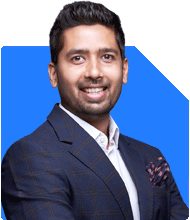Ramalingam Kalirajan |10870 Answers |Ask -Follow
Mutual Funds, Financial Planning Expert - Answered on May 09, 2024
He has an MBA in finance from the University of Madras and is a certified financial planner.
He is the director and chief financial planner at Holistic Investment, a Chennai-based firm that offers financial planning and wealth management advice.... more

Hi sir can you suggest the which mutual funds give high return
Investment Goals: Determine your investment goals, whether it's wealth creation, retirement planning, or saving for a specific goal. Different goals may require different investment strategies and risk profiles.
Risk Tolerance: Assess your risk tolerance to determine how much volatility you can tolerate in your investment portfolio. Higher returns often come with higher risk, so it's crucial to align your investments with your risk tolerance.
Diversification: Invest in a diversified portfolio of mutual funds across various asset classes such as equity, debt, and international funds. Diversification can help reduce overall portfolio risk and enhance long-term returns.
Fund Manager's Track Record: Evaluate the track record and experience of the fund manager managing the mutual fund. A skilled and experienced fund manager can make a significant difference in fund performance over the long term.
Expense Ratio: Consider the expense ratio of the mutual fund, which represents the annual fees charged by the fund house for managing the fund. Lower expense ratios can translate to higher returns for investors over time.
Consistency of Performance: Look for mutual funds that have demonstrated consistent performance over different market cycles rather than just focusing on short-term returns. Consistency indicates the fund's ability to deliver returns across various market conditions.
Fund House Reputation: Choose mutual funds offered by reputable fund houses with a strong track record of managing investor funds responsibly and ethically.
Regular Monitoring: Regularly monitor the performance of your mutual fund investments and review your investment strategy periodically to ensure it remains aligned with your financial goals and risk tolerance.
Remember, there's no guarantee of high returns in mutual fund investments, and it's crucial to invest with a long-term perspective while diversifying your portfolio appropriately.
Best Regards,
K. Ramalingam, MBA, CFP,
Chief Financial Planner,
www.holisticinvestment.in
You may like to see similar questions and answers below
Ulhas Joshi |280 Answers |Ask -Follow
Mutual Fund Expert - Answered on Apr 18, 2023
Kirtan A Shah | Answer |Ask -Follow
MF Expert, Financial Planner - Answered on Jul 11, 2023
Ramalingam Kalirajan |10870 Answers |Ask -Follow
Mutual Funds, Financial Planning Expert - Answered on May 06, 2024
Reetika Sharma |417 Answers |Ask -Follow
Financial Planner, MF and Insurance Expert - Answered on Sep 19, 2025
Dr Dipankar Dutta |1837 Answers |Ask -Follow
Tech Careers and Skill Development Expert - Answered on Dec 05, 2025
Dr Shyam Jamalabad |108 Answers |Ask -Follow
Dentist - Answered on Dec 05, 2025
Dr Shyam Jamalabad |108 Answers |Ask -Follow
Dentist - Answered on Dec 05, 2025
Dr Shyam Jamalabad |108 Answers |Ask -Follow
Dentist - Answered on Dec 05, 2025
Dr Dipankar Dutta |1837 Answers |Ask -Follow
Tech Careers and Skill Development Expert - Answered on Dec 05, 2025
Ulhas Joshi |280 Answers |Ask -Follow
Mutual Fund Expert - Answered on Dec 05, 2025
Dr Dipankar Dutta |1837 Answers |Ask -Follow
Tech Careers and Skill Development Expert - Answered on Dec 04, 2025
Ravi Mittal |676 Answers |Ask -Follow
Dating, Relationships Expert - Answered on Dec 04, 2025
Anu Krishna |1745 Answers |Ask -Follow
Relationships Expert, Mind Coach - Answered on Dec 04, 2025
Anu Krishna |1745 Answers |Ask -Follow
Relationships Expert, Mind Coach - Answered on Dec 04, 2025



























